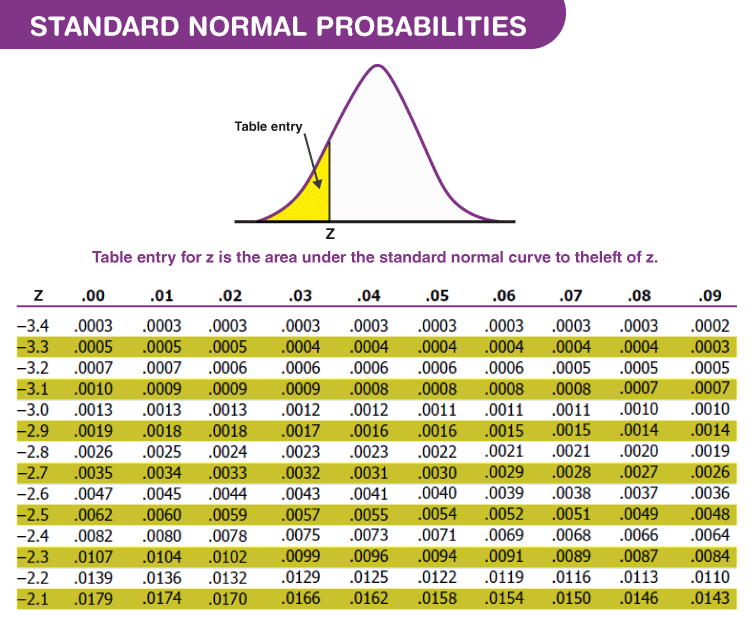The z value is an important concept in statistics that helps us understand how far away a specific data point is from the average. It is measured in terms of standard deviations, which makes it easier to see how unusual or typical a data point is. When we calculate the z value, we can determine whether a result is statistically significant, which means it is not likely to happen by chance. This is useful for researchers and businesses alike when making decisions based on data.
Using the z value is especially helpful in normal distribution, a common pattern seen in many types of data. By knowing the z value, we can find probabilities related to different data points. For example, if we want to know how likely it is for a score to fall within a certain range, the z value can guide us. Understanding this concept is essential for anyone working with statistics, from students to professionals.
What Is Z Value and Why Is It Important?
The z value represents the number of standard deviations a data point is from the mean. In simple terms, it helps us see how extreme or typical a particular score is compared to the average. If the z value is zero, it means the score is exactly average. If it is a positive number, the score is above average, and if it is negative, the score is below average.
Knowing the z value is important because it allows us to compare different sets of data easily. For example, if two students have test scores from different classes, calculating the z values for those scores can help us determine who performed better relative to their peers. This makes it a useful tool in education, sports, and many other fields.
How to Calculate the Z Value Step by Step
Calculating the z value is quite simple. Here’s a step-by-step guide to help you:
- Find the Mean: First, you need to calculate the mean (average) of your data set. Add all the numbers together and divide by the number of values.
- Calculate the Standard Deviation: Next, find the standard deviation, which tells you how spread out the numbers are. This involves taking the square root of the variance.
- Use the Z Value Formula: Finally, use the formula for the z value:
z=(X−μ)σz = \frac{(X – \mu)}{\sigma}z=σ(X−μ)- X is the data point you are analyzing.
- μ (mu) is the mean of the data set.
- σ (sigma) is the standard deviation.
This formula will give you the z value, showing how many standard deviations your data point is from the mean.
Real-Life Examples of Z Value in Action
Understanding the z value can help in many real-life situations. Here are some examples:
- Test Scores: Let’s say you take a math test, and your score is 85. If the class average is 75 with a standard deviation of 10, you can calculate your z value. This tells you how well you did compared to your classmates.
- Sports Performance: In sports, coaches can use z values to compare player performances. If one player has a score of 20 points per game and another has 15 points, calculating their z values helps determine who is performing better relative to the rest of the team.
- Health Measurements: Doctors use z values to analyze health measurements like blood pressure. If a patient’s reading is higher than the average, the doctor can assess how much higher and what it means for the patient’s health.
Understanding Z Values in Normal Distribution
The z value is especially useful in understanding normal distribution. Normal distribution is a bell-shaped curve where most data points cluster around the mean, and fewer points are found as you move away from it.
Key Features of Normal Distribution
- Symmetry: The curve is symmetric around the mean.
- 68-95-99.7 Rule: About 68% of data points fall within one standard deviation of the mean, 95% within two, and 99.7% within three. This is important when interpreting z values.
When we calculate z values in a normal distribution, we can find out how likely it is for a score to fall within a certain range. This helps in many areas, including education, psychology, and business.
Applications of Z Value in Different Fields
- Education: Teachers can use z values to identify students who may need extra help or who are excelling.
- Business: Companies can analyze sales data using z values to spot trends or issues.
- Medicine: Health professionals can assess patient results to determine if they are within a healthy range.
Tips for Interpreting Z Values Correctly
When interpreting the z value, keep these tips in mind:
- Know the Context: Always consider the context of the data. A high z value may be good in one situation but bad in another.
- Use with Other Data: Z values are more informative when used alongside other statistics, like means and standard deviations.
- Understand Limitations: Z values assume normal distribution, so they may not be accurate for skewed data sets.
Conclusion: The Significance of Z Value in Statistics
The z value is a powerful tool in statistics. It helps us understand how far a data point is from the average, which is crucial in many fields. By calculating and interpreting z values, we can make informed decisions based on data.
In summary, the z value gives us insights into data analysis, making it easier to compare scores and performances. Whether in education, sports, or health, understanding z values can help us see the bigger picture in data.
FAQs
Q: What does a z value of 2 mean?
A: A z value of 2 means the data point is two standard deviations above the mean. This indicates that the score is higher than average.
Q: How is the z value used in real life?
A: The z value is used in various fields like education to assess student performance, in sports to compare athlete statistics, and in health to evaluate patient measurements.
Q: Can a z value be negative?
A: Yes, a negative z value means the data point is below the mean. It shows how many standard deviations the score is lower than the average.





